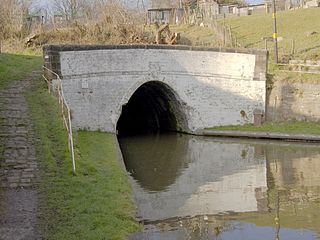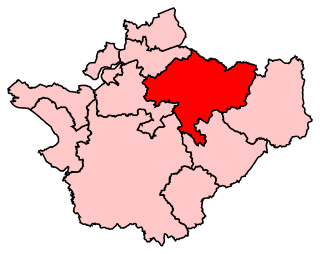
1659 (MDCLIX) was a common year starting on Wednesday of the Gregorian calendar and a common year starting on Saturday of the Julian calendar, the 1659th year of the Common Era (CE) and Anno Domini (AD) designations, the 659th year of the 2nd millennium, the 59th year of the 17th century, and the 10th and last year of the 1650s decade. As of the start of 1659, the Gregorian calendar was 10 days ahead of the Julian calendar, which remained in localized use until 1923.

Northwich is a town and civil parish in the unitary authority of Cheshire West and Chester in the ceremonial county of Cheshire, England. It lies in the heart of the Cheshire Plain, at the confluence of the rivers Weaver and Dane. The town is about 18 miles (29 km) east of Chester, 15 miles (24 km) south of Warrington, and 19 miles (31 km) south of Manchester.

The Second English Civil War took place between February and August 1648 in England and Wales. It forms part of the series of conflicts known collectively as the 1639–1653 Wars of the Three Kingdoms, which include the 1641–1653 Irish Confederate Wars, the 1639–1640 Bishops' Wars, and the 1649–1653 Cromwellian conquest of Ireland.

Barnton is a civil parish and village in the northwest region of England, just outside the town of Northwich, in the unitary authority of Cheshire West and Chester and the ceremonial county of Cheshire. It lies north and east of the Trent & Mersey Canal which goes through two tunnels to the west of the village.

George Booth, 1st Baron Delamer, was an English landowner and politician from Cheshire, who served as an MP from 1646 to 1661, when he was elevated to the House of Lords as Baron Delamer.

Tatton is a constituency in Cheshire represented in the House of Commons of the UK Parliament since 2017 by Esther McVey, a Conservative.

Weaver Vale is a constituency in Cheshire represented in the House of Commons of the UK Parliament since 2017 by Mike Amesbury, a member of the Labour Party.

Sir Thomas Myddelton (1586–1666) of Chirk Castle, Denbighshire, was an English-born Welsh landowner, politician, and military officer. He became a Member of Parliament in 1624; during the First English Civil War he was a prominent Parliamentarian general, despite having no previous military experience.

Cuddington is a civil parish and rural village in the unitary authority of Cheshire West and Chester and the ceremonial county of Cheshire, England, about 4 miles west of Northwich and 13 miles east of Chester.

Greenbank railway station serves the village of Hartford, Cheshire as well as the Greenbank and Castle areas of Northwich, Cheshire, England. The station is situated on the A559 road from Northwich to Chester.

The Second Battle of Middlewich took place on 26 December 1643 near Middlewich in Cheshire during the First English Civil War. A Royalist force under Lord Byron defeated a Parliamentarian army commanded by Sir William Brereton.
The history of Northwich can be traced back to the Roman period. The area around Northwich has been exploited for its salt pans since this time. The town has been severely affected by salt mining with subsidence historically being a large issue. A programme of mine stabilisation has recently been undertaken.
The West Cheshire Railway (WCR) was an early railway company based in Cheshire, England.
The Battle of Warrington Bridge was a skirmish fought on 13 August 1651 between the invading Royalist Scottish army of Charles II and Parliamentary forces under the command of Major-General John Lambert.

Booth's Uprising, also known as Booth's Rebellion or the Cheshire Rising of 1659, was an unsuccessful attempt in August 1659 to restore Charles II of England. Centred on North West England and led by George Booth, it took place during the political turmoil that followed the resignation of Richard Cromwell as head of The Protectorate.
Northwich is a civil parish and a town in Cheshire West and Chester, England. It contains 35 buildings that are recorded in the National Heritage List for England as designated listed buildings. Two of these are listed at Grade I, the highest grade, and the rest at the lowest grade, Grade II; none are listed at the middle grade, Grade II*. The River Dane joins the River Weaver and the Weaver Navigation within the parish. Also passing through the parish are the A533 road, the Trent and Mersey Canal, and a railway built by the Cheshire Lines Committee. Many of the listed buildings are associated with these features.

Sir Edward Broughton was a Welsh landowner and soldier with a long service in Royalist armies during the Wars of the Three Kingdoms. Imprisoned in the Gatehouse Prison in Westminster in 1659 following a Royalist rebellion, he later married the prison keeper's widow and took on the lease of the prison himself.
















